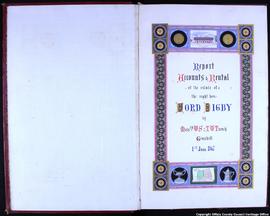- IE OCCHO DIGBY/A/10
- Item
- 1866
Part of Digby Irish Estates
Annual report and rental for year end June 1866, containing reports on the steady and continuous improvement of the financial affairs of the estate. Also discusses drainage and land improvements particularly the 343 statute acres on either side of the Tullamore Road, and a new project at Ballyknockan flat. Reports that the soil here was particularly poor, and 650 tons of Dublin dairy manure was shipped down the Grand Canal and spread over the land, resulting in a marked improvement in grass growth. Also reports on the completion of the Killeigh main-drain and the Plovers-egg drain at Clonad Wood. Also includes a report on large-scale farming on the estate and the construction of three new farmhouses and a new forge.
On political matters, the report describes the 1865 general election which was contested by Sir Patrick O'Brien, John Gilbert King and Mr. Hennessy (O'Brien and King elected). Provides a detailed breakdown of voting preferences by the tenantry of Geashill Estate, who Trench reports, voted and returned home peacefully 'before the usual excitement attendant on an Irish Election had begun.' Also includes a description of election day in Tullamore, complete with mobs with 'shillelaghs'.

